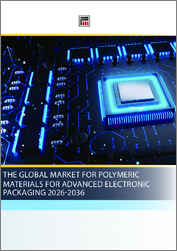
|
시장보고서
상품코드
1827294
복합재료 시장 : 유형별, 보강재별, 수지 유형별, 제조 공정별, 용도별, 최종 이용 산업별 - 세계 예측(2025-2032년)Composites Market by Type, Reinforcement Material, Resin Type, Manufacturing Process, Application, End-Use Industry - Global Forecast 2025-2032 |
||||||
복합재료 시장은 2032년까지 연평균 복합 성장률(CAGR) 6.93%로 1,627억 2,000만 달러에 이를 것으로 예측됩니다.
| 주요 시장 통계 | |
|---|---|
| 기준 연도 : 2024년 | 952억 달러 |
| 추정 연도 : 2025년 | 1,013억 8,000만 달러 |
| 예측 연도 : 2032년 | 1,627억 2,000만 달러 |
| CAGR(%) | 6.93% |
진화하는 재료 혁신, 공급망 통합, 복합재료 산업을 변화시키는 전략적 필수 요소에 대한 종합적인 방향성
복합재료 분야는 재료과학의 혁신, 산업 수요의 진화, 지속가능성에 대한 약속이 교차하며 제품 설계 및 제조 전략을 재정의하는 영향력 있는 교차로에 서 있습니다. 섬유 기술, 수지 화학, 가공 방법의 발전은 가능성의 폭을 넓혀 운송, 에너지, 인프라 분야에서 더 가볍고, 더 강하고, 더 내구성이 뛰어난 부품을 가능하게 하고 있습니다. 동시에, 최종 사용 산업은 비용 규율과 공급 연속성을 유지하면서 재료와 공급업체에 더 엄격한 성능 및 수명주기 요구 사항을 부과하여 재료와 공급업체에 빠른 적응을 요구하고 있습니다.
업계 이해관계자들은 전구체 및 보강재 선택부터 대량 생산, 사용 후 제품 회수까지 전체 가치사슬에 걸친 통합을 점점 더 우선순위로 삼고 있습니다. 그 결과, OEM, 재료 혁신가, 가공 전문가 간의 파트너십은 보다 전략적이고 장기적인 지향점을 강화하고 있습니다. 이를 통해 확장 가능한 생산, 자동화된 레이업 및 검사, 경쟁력을 크게 강화할 수 있는 폐쇄형 루프 재활용 프로그램에 집중 투자할 수 있는 기회를 창출할 수 있습니다.
앞으로 시장 리더를 돋보이게 하는 것은 회복력과 적응력입니다. 소재 전문성, 공정 엔지니어링, 디지털 추적성을 결합한 기능적 역량에 투자하는 기업은 다양한 규제에 대응하고, 제품 개발 주기를 단축하고, 새로운 응용 분야를 확보하는 데 유리한 위치를 점할 수 있습니다. 이 경영진 요약은 경영진이 기술적 우위를 상업적 성공으로 전환하기 위해 고려해야 할 변혁적 변화, 정책적 역풍, 세분화 역학, 지역적 차이, 실행 가능한 우선순위에 대해 설명합니다.
시뮬레이션 기반 설계, 자동화, 순환형 사회 대응, 공급망 다변화가 제품 개발 및 제조 방식에 어떤 변화를 가져오고 있는가?
복합재료를 둘러싼 환경은 점진적인 재료의 개선에 그치지 않고, 부품의 설계, 제조, 유통 방식의 체계적인 변화에 이르기까지 여러 수렴하는 힘에 의해 재구성되고 있습니다. 시뮬레이션 중심의 워크플로우와 멀티스케일 모델링을 통한 설계의 디지털화는 개발 주기를 단축하고, 이방성 재료 특성을 보다 효과적으로 활용하는 토폴로지 최적화 구조를 가능하게 했습니다. 동시에, 적층 가공 및 자동 섬유 배치 기술은 맞춤형 형상의 제조 비용과 복잡성을 줄이고 기능 통합 및 부품 통합을 가속화하고 있습니다.
지속가능성 의무화와 순환성 목표가 라이프사이클 전반의 혁신을 촉진하고 있습니다. 소재 공급업체와 OEM은 재활용 가능한 수지, 바이오 유래 강화재, 기계적 및 화학적 재생 공정 등에 투자하여 사용 후 제품 문제를 해결하기 위해 노력하고 있습니다. 이러한 움직임은 구매자가 출처 보장, 저탄소, 진화하는 규제 기준에 대한 투명한 준수를 요구하게 되면서 조달 전략의 전환을 수반하고 있습니다. 이와 함께 지정학적 요인에 따른 공급망 다변화도 가속화되고 있습니다. 제조업체들은 적시성(Just In Time)의 효율성과 섬유, 수지 및 중요한 중간체의 안전하고 지리적으로 분산된 공급원의 필요성과 균형을 맞추기 위해 노력하고 있습니다.
마지막으로, 가치를 실현하기 위해서는 컴포넌트 단독의 최적화가 아닌 시스템적 사고가 점점 더 중요해지고 있습니다. 재료 과학자, 제조 전문가, 시스템 통합사업자와의 전략적 제휴를 통해 조립의 복잡성을 줄이고, 총소유비용을 낮추며, 전동화 모빌리티, 재생에너지, 고성능 소비자 제품에 인접한 기회를 열어주는 새로운 아키텍처를 가능하게 하고 있습니다. 이러한 혁신적 변화로 인해 기업들은 연구개발, 조달, 시장진입의 각 프로세스에 민첩성을 접목하여 새로운 성장 동력을 확보해야 합니다.
최근 관세 조치가 어떻게 조달 전략을 변화시키고, 국내 역량 구축에 대한 인센티브를 제공하고, 복합소재 가치사슬 전반에 걸쳐 공급망을 재구성하고 있는지를 평가합니다.
무역의 흐름을 바꾸기 위한 정책적 개입은 비용 구조, 조달 행동, 공급업체 관계를 변화시킴으로써 복합소재 생태계 전체에 급속한 반향을 불러일으킬 수 있습니다. 2025년 미국에서 도입된 관세 조치로 인해 제조업체, 원자재 공급업체, OEM은 기존 공급업체 계약과 재고 정책을 재검토해야 했습니다. 이러한 조치는 현지 조달 및 니어쇼어링 전략에 대한 검토를 가속화하고, 현지 원자재 조달을 최적화하기 위한 재설계를 촉진하며, 투입물 가격 변동에 대한 계약상 보호의 중요성을 높이고 있습니다.
관세 주도의 투입비용 상승은 연쇄적인 효과를 가져옵니다. 즉, OEM의 마진을 압박하고, 비용 부담을 줄이면서 성능을 유지하기 위한 공정 개선 및 재료 대체를 촉진합니다. 많은 기업들은 장기 공급 계약의 재협상, 2차 공급원 확보, 국내 가공 능력에 대한 투자 가속화 등의 조합으로 대응하고 있습니다. 장기적으로 이러한 전술적 변화는 공급업체 기반을 더욱 견고하게 만들겠지만, 최종 고객에 대한 가격 전가가 제한된다면 단기적으로 수익성을 압박할 수 있습니다.
관세는 직접적인 비용에 대한 영향뿐만 아니라, 첨단 제조업의 입지, 우선순위를 정해야 할 협력업체, 대응력과 자본 효율성의 균형을 맞추기 위한 재고 구성 방법 등 전략적 의사결정에도 영향을 미칩니다. 관세는 또한 재료의 효율화, 설계의 통합, 국산 보강재와 수지의 사용 확대를 위한 움직임을 강화하고 있습니다. 관세는 일시적인 정책수단이지만, 그 누적 영향은 지속적인 적응이 필요합니다. 적극적으로 공급업체 네트워크를 다변화하고, 멀티소스 인증을 통해 노출을 헤지하고, 생산성 향상 기술에 투자하는 기업은 향후 정책 주도의 혼란을 완화할 수 있는 유리한 위치를 점할 수 있을 것으로 보입니다.
기초 화학물질, 보강재 선택, 가공 경로, 응용 수요, 최종 사용 산업 요구를 연결하는 세분화 계층별 통찰력을 통해 타겟팅된 상업화 전략이 가능합니다.
부문 수준의 역학을 이해하려면 재료 등급, 보강재 선택, 수지 시스템, 제조 공정 및 응용 분야 요구 사항이 어떻게 상호 작용하여 제품 성능과 상업적 실행 가능성을 형성하는지에 대한 세부적인 이해가 필요합니다. 세라믹 기반 복합재료는 비산화물계와 산화물계로, 금속 기반 복합재료는 알루미늄, 마그네슘, 티타늄으로, 고분자 기반 복합재료는 열가소성 기술과 열경화성 기술로 나뉩니다. 이러한 유형의 차이는 열 성능, 보수성, 고온 환경 및 부식 환경에 대한 적합성에 영향을 미치기 때문에 항공우주, 에너지, 산업 응용 분야에서 선택의 기준이 됩니다.
보강 측면에서 아라미드 섬유, 탄소섬유, 유리 섬유, 천연섬유, 아라미드 섬유는 메타 아라미드 섬유와 파라 아라미드 섬유로, 천연섬유는 대나무와 황마 옵션으로 구분됩니다. 보강재 선택은 강성 대 중량비, 내충격성, 피로 거동에 영향을 미치며, 절대적인 성능의 트레이드오프가 존재하더라도 바이오 섬유가 낮은 수명주기 영향 때문에 평가되는 등 지속가능성 우선순위가 점점 더 반영되고 있습니다. 에폭시 수지, 폴리아미드 수지, 폴리 에스테르 수지 및 비닐 에스테르 수지는 각각 특정 레이업 기술 및 경화 일정과의 적합성을 결정하는 명확한 접착력, 인성 및 가공 창 특성을 제공하기 때문에 수지 화학은 재료의 거동을 더욱 정교하게 만듭니다.
압축 성형, 필라멘트 와인딩, 사출 성형과 같은 제조 공정의 선택은 재료의 잠재력을 생산 가능한 형태로 변환하고, 사이클 시간, 반복성, 부품의 복잡성을 결정합니다. 공정 선택은 외부 부품, 내부 부품, 구조 부품, 변속기 부품 등 다양한 응용 분야의 요구 사항, 기계적 요구 사항, 표면 처리 기대치, 규제 테스트 프로토콜과 밀접하게 관련되어 있습니다. 항공우주 카테고리에는 민간 항공기, 군용 항공기, 우주선, 자동차는 대형 트럭, 소형 상용차, 승용차, 건설은 상업, 산업, 주택, 전기 및 전자, 해양은 상업용 선박과 레저용 선박, 풍력에너지는 블레이드와 발전기를 구분합니다. 와 발전기를 구분합니다. 또한, 해양은 상업용 선박과 레저용 선박을, 풍력은 블레이드와 발전기를 구분하고 있습니다. 이러한 계층적 세분화 프레임워크를 통해 성능 트레이드오프, 규제 제약, 전체 수명주기 요구사항에 대응하기 위해 재료 개발, 공정 최적화, 제품화 경로를 정확하게 세분화할 수 있습니다.
복합재료 제조업체와 OEM의 전략적 포지셔닝, 수요 촉진요인, 규제 우선순위, 공급 탄력성의 지역적 차이 결정
지역 역학은 첨단 복합재료 기술공급망, 규제 대응 및 채택률 형성에 있어 매우 중요한 역할을 합니다. 북미와 남미에서는 자동차 전동화, 풍력에너지 도입, 항공우주 현대화 프로그램의 강력한 수요가 업계의 모멘텀을 주도하고 있습니다. 이 지역의 특징은 국내 생산 능력 확대에 대한 중요성이 점점 더 강조되고, 세계 물류의 불확실성에 노출될 기회를 줄이고, 엄격한 안전 및 인증 요건을 충족하기 위해 제조 자동화에 대한 단기 투자가 이루어지고 있다는 점입니다. 이 지역의 조달팀은 지속가능성 기준을 조달 결정에 반영하는 한편, 섬유와 수지의 가용성에 대한 장기적인 약속을 확보하기 위해 공급업체와 적극적으로 소통하고 있습니다.
유럽, 중동 및 아프리카는 엄격한 환경 규제, 고성능 항공우주 및 방위 활동, 빠르게 진화하는 에너지 인프라에 대한 요구가 복잡하게 얽혀 있습니다. 순환형 사회와 탄소 저감 정책에 따라 재활용 가능한 수지 시스템과 재료 추적 솔루션의 도입이 가속화되고 있습니다. 또한, 이 지역의 성숙한 엔지니어링 역량과 탄탄한 인증 프레임워크는 풍력에너지 및 고급 자동차 등의 분야에서 첨단 소재 개발 및 시범 적용을 유도하고 있습니다. 한편, 아시아태평양의 신흥 시장은 산업 및 건설 용도를 위한 생산 능력과 현지화된 공급망에 대한 집중적인 투자 기회를 제공합니다.
아시아태평양은 강력한 제조 생태계, 통합된 공급망, 급속한 도시화로 인해 여전히 주요 생산 기지이자 수요 증가의 중심지입니다. 이 지역에는 섬유 제조업체와 수지 제조업체가 집중되어 있으며, 대규모 OEM과 결합하여 대량 생산 용도와 비용 경쟁력 있는 생산을 지원하고 있습니다. 그 결과, 이 지역의 이해관계자들은 공급업체 다각화, 지역화된 부가가치, 세계 공급망 전반에서 품질과 규정 준수를 유지하기 위한 프로세스 자동화 및 인력 역량 강화에 대한 투자를 통해 회복탄력성을 구축하는 데 점점 더 많은 초점을 맞추었습니다. 하고 있습니다.
혁신 리더십, 전략적 수직 통합, 고객 중심의 공동 개발 모델이 복합재료 공급업체의 경쟁 우위를 재정의하는 방법
복합재료 분야의 주요 기업들 간의 경쟁 역학은 재료 혁신을 통합하고, 제조 규모를 확대하며, 까다로운 OEM에 인증된 성능을 제공할 수 있는 능력에 의해 형성되고 있습니다. 시장을 선도하는 기업들은 독자적인 섬유 아키텍처, 수지 배합, 공정 자동화에 많은 투자를 통해 부품당 가치를 높이고 디자인 주도형 부품 통합을 가능하게 합니다. 전략적 움직임으로는 전구체 및 수지 생산에 대한 수직적 통합, 전문 가공업체와의 제휴, 신소재 시스템의 스케일업 위험을 피하기 위한 파일럿 라인에 대한 투자 등이 있습니다.
OEM의 설계 팀과 엔지니어를 통합하여 부품을 공동 개발하는 공급업체는 더 빠른 인증과 견고한 잠금을 달성합니다. 또한, 라이프사이클 서비스(사용 후 재활용 프로그램, 인증 지원, 성능 검증 등)를 중시하는 기업들은 고객의 총소유비용을 낮춰 차별화를 꾀하고 있습니다. M&A는 틈새 기술, 지리적 시장 진입, 전문 제조 능력에 대한 액세스를 인수 기업에 제공하고, 역량 확장을 위한 적극적인 수단으로 남을 것입니다.
지적재산권과 시장 경쟁 속도는 중요한 경쟁력입니다. 강화 아키텍처, 수지 화학, 독자적인 가공 기술에 대한 탄탄한 특허 포트폴리오를 보유한 기업은 장기 공급 계약 협상에서 유리한 고지를 점할 수 있습니다. 마찬가지로 중요한 것은 운영적 우수성입니다. 생산 수율을 최적화하고, 스크랩을 줄이고, 디지털 품질 관리를 통합한 조직은 마진 탄력성을 확보하고, 안정적인 납기 준수와 일관된 부품 품질을 통해 고객과의 관계를 강화할 수 있습니다.
제조업체와 OEM이 회복탄력성을 강화하고, 혁신을 가속화하며, 더 높은 가치의 비즈니스 기회를 포착할 수 있도록 실질적인 전략적 우선순위와 역량에 투자하는 것
업계 리더는 단기적인 운영 탄력성과 장기적인 기술 리더십의 균형을 맞추는 협력 전략을 추구해야 합니다. 첫째, 여러 지역에 걸친 공급업체 네트워크를 다양화하여 중요한 섬유와 수지의 2차 공급원을 확보함으로써 인증 경로를 유지하면서 정책 변화 및 물류 중단에 대한 리스크를 줄일 수 있습니다. 과도한 안전재고로 자본을 고정화하지 않고 신속한 규모 확장을 가능하게 하는 재고 분석과 유연한 계약 구조에 대한 투자로 공급 다변화를 보완합니다.
둘째, 제조 디지털화 및 자동화에 대한 투자를 우선시하고, 처리량을 높이고, 변동을 줄이며, 신제품 도입을 가속화합니다. 디지털 트윈과 인라인 비파괴 평가를 도입함으로써 인증 주기를 단축하고 지속적인 프로세스 개선에 필요한 데이터 백본을 제공할 수 있습니다. 셋째, 재활용 가능한 수지 시스템 및 확장 가능한 재생 공정과 같은 순환형 기술의 개발 및 채택을 가속화하여 규제 기대와 고객의 지속가능성 요구 사항을 충족하는 동시에 회수 된 재료로부터 새로운 수익원을 개척합니다.
넷째, 재료 혁신과 설계 최적화를 일치시키는 공동 개발 모델을 통해 OEM 및 시스템 통합사업자와의 파트너십을 강화합니다. 이러한 협력 관계는 부품 통합, 공동 인터페이스 감소, 실제 환경에서의 수명주기 성능 검증을 목표로 해야 합니다. 마지막으로, 관세 및 정책 민감도 분석을 포함한 시나리오 기반 전략 수립 역량을 구축하여 설비투자 의사결정이 향후 발생할 수 있는 무역 및 규제 상황에 대해 스트레스 테스트를 받을 수 있도록 합니다. 이러한 행동이 결합되어 진화하는 시장 환경 속에서 수익성 있는 성장을 뒷받침할 수 있는 튼튼한 경쟁 기반을 구축할 수 있습니다.
전문가 인터뷰, 특허 및 기술 문헌 통합, 공급망 매핑, 시나리오 기반 검증을 결합한 엄격한 혼합 방법론별 접근 방식을 통해 실행 가능하고 신뢰할 수 있는 결과를 보장합니다.
본 분석을 뒷받침하는 조사 방법은 기술적 뉘앙스와 상업적 배경을 모두 파악할 수 있도록 설계된 계층적 접근 방식을 채택했습니다. 1차 조사는 재료 과학자, 생산 기술자, 조달 책임자 및 최종 사용 산업 전반의 고위 경영진과의 구조화된 인터뷰로 구성되었으며, 진화하는 규정 준수에 대한 기대치를 이해하기 위해 표준화 단체 및 인증 기관과의 집중적인 논의를 통해 보완되었습니다. 이러한 질적 입력은 특허 출원 및 최근 기술 문헌에 대한 체계적인 검토와 통합되어 섬유 아키텍처, 수지 화학 및 가공 기술 분야의 혁신의 궤적을 추적합니다.
2차 조사에는 벤더 및 공급업체의 기술 개요, 규제 관련 문서, 생산 규모에서의 도입 사례 등이 포함되었으며, 실용적인 제조 가능성과 인증 일정 등을 확인했습니다. 공급망 매핑은 중요한 투입물을 추적하고 집중화 위험을 식별하는 데 사용되었으며, 시나리오 분석은 정책 개입과 원자재 제약이 조달 및 생산 선택에 미치는 영향을 조사했습니다. 가능한 경우, 주장된 재료 특성 및 가공 창구를 뒷받침하기 위해 자체적으로 수행한 시험 및 제3자 검증 보고서의 성능 데이터를 참조하였습니다.
통합은 단일 소스에 의존하는 것이 아니라, 실행 가능한 견고한 통찰력을 얻기 위해 소스 간 증거의 삼각관계에 중점을 두었습니다. 전문가 검토회의와 상호 검증을 통해 가정에 이의를 제기하고, 해석을 정교하게 다듬고, 분석이 업무적 현실에 기반한 것임을 확인했습니다. 이러한 조사 방법론의 엄격함은 요약서를 통해 제시되는 결론과 권고사항을 뒷받침하고, 자본 배분, 조달, 제품 전략 의사결정을 내리는 경영진에게 적합하게 만들어 줍니다.
탄력성, 순환성, 통합적 혁신이 진화하는 복합소재 생태계에서 승자를 결정하는 이유를 보여주는 전략적 요구의 통합
복합재료 부문은 점진적인 재료 개선에 초점을 맞춘 시대에서 재료, 공정, 수명주기 관리의 체계적인 통합으로 정의되는 시대로 전환하고 있습니다. 재료와 제조의 발전으로 성능 향상을 위한 새로운 제품 아키텍처가 가능해진 반면, 인증, 공급 보증, 서비스 수명을 고려해야 하는 새로운 복잡성이 생겨나고 있습니다. 정책 전환과 무역 조치는 공급망의 전략적 분리를 가속화하고, 역량 투자의 지역화를 촉진하며, 기업이 장기적인 조달 전략을 재검토하도록 유도하고 있습니다.
이 시대의 성공은 기술적 깊이와 상업적 민첩성을 겸비한 조직에 유리하게 작용할 것으로 보입니다. 확장 가능한 제조에 투자하고, 공급을 다양화하며, 제품 개발을 순환성 요구와 일치시키는 기업은 규제와 정책적 혼란에 노출될 위험을 줄이면서 프리미엄 기회를 포착할 수 있을 것으로 보입니다. 소재 혁신가, OEM, 시스템 통합사업자 간의 파트너십은 신기술의 리스크를 줄이고 시장 출시를 가속화하기 위한 주요 경로가 될 것으로 보입니다.
즉, 조달에 회복탄력성을 통합하고, 공정 자동화를 우선시하며, 지속 가능한 소재 전략을 수립하는 기업은 가장 까다로운 최종 용도 시장에서 기술적 잠재력을 지속 가능한 경쟁 우위로 전환할 수 있는 최고의 위치에 서게 될 것입니다.
목차
제1장 서문
제2장 조사 방법
제3장 주요 요약
제4장 시장 개요
제5장 시장 인사이트
제6장 미국 관세의 누적 영향 2025
제7장 AI의 누적 영향 2025
제8장 복합재료 시장 : 유형별
- 탄소 복합재료
- 세라믹 복합재료
- 비산화물계 복합재료
- 산화물계 복합재료
- 금속 복합재료
- 알루미늄 복합재료
- 마그네슘 복합재료
- 티타늄 복합재료
- 폴리머 복합재료
- 열가소성 복합재료
- 열경화성 복합재료
제9장 복합재료 시장 : 보강재별
- 아라미드 섬유
- 메타아라미드섬유
- 파라아라미드섬유
- 탄소섬유
- 유리섬유
- 천연섬유
- 대나무 섬유
- 황마 섬유
제10장 복합재료 시장 : 수지 유형별
- 에폭시 수지
- 폴리아미드 수지
- 폴리에스테르 수지
- 비닐에스테르 수지
제11장 복합재료 시장 : 제조 공정별
- 압축 성형
- 필라멘트 와인딩
- 사출 성형
제12장 복합재료 시장 : 용도별
- 외장 부품
- 내장 부품
- 구조 부품
- 변속기 부품
제13장 복합재료 시장 : 최종 이용 산업별
- 항공우주 및 방위
- 민간 항공기
- 군용기
- 우주선
- 자동차
- 대형 트럭
- 소형 상용차
- 승용차
- 건설
- 상업
- 산업
- 주택
- 전기 및 전자
- 소비자 일렉트로닉스
- 전자부품
- 선박
- 상용 선박
- 레크리에이션선
- 풍력에너지
- 블레이드
- 발전기
제14장 복합재료 시장 : 지역별
- 아메리카
- 북미
- 라틴아메리카
- 유럽, 중동 및 아프리카
- 유럽
- 중동
- 아프리카
- 아시아태평양
제15장 복합재료 시장 : 그룹별
- ASEAN
- GCC
- EU
- BRICS
- G7
- NATO
제16장 복합재료 시장 : 국가별
- 미국
- 캐나다
- 멕시코
- 브라질
- 영국
- 독일
- 프랑스
- 러시아
- 이탈리아
- 스페인
- 중국
- 인도
- 일본
- 호주
- 한국
제17장 경쟁 구도
- 시장 점유율 분석, 2024
- FPNV 포지셔닝 매트릭스, 2024
- 경쟁 분석
- ARRIS Composites, Inc.
- BASF SE
- Celanese Corporation
- China Jushi Co., Ltd.
- Compagnie Chomarat
- Compagnie de Saint-Gobain S.A.
- Covestro AG
- Creative Composites Group
- DuPont de Nemours, Inc.
- Evonik Industries AG
- Flex Composite Group
- General Electric Company
- Gurit Services AG
- Hexcel Corporation
- Honeywell International Inc.
- Huntsman Corporation
- Kineco Limited
- LAMILUX Heinrich Strunz Holding GmbH & Co. KG
- LyondellBasell Industries Holdings B.V.
- Mitsubishi Chemical Corporation
- Nippon Electric Glass Co., Ltd.
- Owens Corning
- Performance Composites Inc.
- Safran S.A.
- Schutz GmbH & Co. KGaA
- SGL CARBON SE
- Sigmatex(UK) Limited
- Sika AG
- Solvay S.A.
- Strongwell Corporation
- Toray Industries, Inc.
- TPI Composites Inc.
The Composites Market is projected to grow by USD 162.72 billion at a CAGR of 6.93% by 2032.
| KEY MARKET STATISTICS | |
|---|---|
| Base Year [2024] | USD 95.20 billion |
| Estimated Year [2025] | USD 101.38 billion |
| Forecast Year [2032] | USD 162.72 billion |
| CAGR (%) | 6.93% |
A comprehensive orientation to evolving material innovations, supply chain integration, and strategic imperatives reshaping the composites industry landscape
The composites sector stands at an influential crossroads where material science innovation, evolving industrial demand, and sustainability commitments intersect to redefine product design and manufacturing strategy. Advances in fiber technologies, resin chemistries, and processing methods are broadening the envelope of what is possible, enabling lighter, stronger, and more durable components across transportation, energy, and infrastructure applications. Concurrently, end-use industries are imposing tighter performance and lifecycle requirements that push materials and suppliers to adapt rapidly while maintaining cost discipline and supply continuity.
Industry stakeholders are increasingly prioritizing integration across the value chain, from precursor materials and reinforcement selection through to high-volume manufacturing and end-of-life recovery. As a result, partnerships between OEMs, materials innovators, and machining specialists are growing more strategic and long-term oriented. This creates opportunities for focused investments in scalable production, automated layup and inspection, and closed-loop recycling programs that can materially enhance competitiveness.
Looking ahead, resilience and adaptability will distinguish market leaders. Those that invest in cross-functional capabilities - combining material expertise, process engineering, and digital traceability - will be better positioned to meet diverse regulatory regimes, accelerate product development cycles, and capture new application spaces. The remainder of this executive summary outlines the transformative shifts, policy headwinds, segmentation dynamics, regional differentials, and actionable priorities that executives must consider to translate technical advantage into commercial success.
How simulation-driven design, automation, circularity imperatives, and supply chain diversification are collectively transforming product development and manufacturing practices
The composites landscape is being reshaped by multiple converging forces that extend beyond incremental material improvements to systemic shifts in how parts are designed, manufactured, and circulated. Digitalization of design through simulation-driven workflows and multi-scale modeling has shortened development cycles and enabled topology-optimized structures that exploit anisotropic material properties more effectively. At the same time, additive manufacturing and automated fiber placement technologies are reducing the cost and complexity of producing bespoke geometries, which accelerates functional integration and part consolidation.
Sustainability mandates and circularity objectives are driving innovation across the lifecycle. Material vendors and OEMs are investing in recyclable resins, bio-derived reinforcements, and mechanical and chemical reclamation processes to address end-of-life challenges. These moves are accompanied by shifts in procurement strategies as buyers seek guaranteed provenance, lower embodied carbon, and transparent compliance with evolving regulatory standards. In parallel, geopolitically driven supply chain diversification is gaining momentum; manufacturers are balancing just-in-time efficiency with the need for secure, geographically distributed sources of fibers, resins, and critical intermediates.
Finally, value is increasingly realized through systems thinking rather than component optimization in isolation. Strategic alliances among material scientists, fabrication specialists, and systems integrators are enabling new architectures that reduce assembly complexity, lower total ownership costs, and open adjacent opportunities in electrified mobility, renewable energy, and high-performance consumer products. These transformative shifts demand organizations embed agility into their R&D, procurement, and go-to-market processes to capture emergent growth vectors.
Assessment of how recent tariff measures are altering sourcing strategies, incentivizing domestic capacity building, and reshaping supply networks across the composites value chain
Policy interventions aimed at altering trade flows can produce rapid reverberations across the composites ecosystem by changing cost structures, sourcing behaviors, and supplier relationships. The tariff measures introduced in 2025 in the United States have compelled manufacturers, raw material suppliers, and OEMs to reassess existing supplier agreements and inventory policies. These measures have accelerated consideration of regional sourcing and nearshoring strategies, prompted redesign efforts to optimize for local material availability, and elevated the importance of contractual protections against input-price volatility.
Tariff-driven input cost increases have a cascading effect: they place pressure on OEM margins and encourage process improvements and material substitutions that preserve performance while easing cost exposure. For many firms, the immediate response has been a combination of renegotiating long-term supply contracts, qualifying secondary sources, and accelerating investments in domestic processing capacity where feasible. Over time, these tactical changes can result in a more robust supplier base but may also compress short-term profitability if pass-through pricing to end customers is constrained.
Beyond direct cost implications, tariffs influence strategic decisions about where to locate advanced manufacturing, which partnerships to prioritize, and how to structure inventories to balance responsiveness with capital efficiency. They have also intensified the drive toward material efficiency, design consolidation, and greater use of domestically sourced reinforcements and resins. While tariffs are an episodic policy lever, their cumulative impact requires sustained adaptation: firms that proactively diversify supplier networks, hedge exposure through multi-source qualification, and invest in productivity-enhancing technologies will be better positioned to mitigate future policy-driven disruptions.
Layered segmentation insights connecting matrix chemistry, reinforcement selection, processing routes, application demands, and end-use industry imperatives to enable targeted commercialization strategies
Understanding segment-level dynamics requires a granular appreciation of how material classes, reinforcement choices, resin systems, manufacturing processes, and application requirements interact to shape product performance and commercial viability. Based on type, the market encompasses Carbon Matrix Composites, Ceramic Matrix Composites, Metal Matrix Composites, and Polymer Matrix Composites, with Ceramic Matrix Composites further divided into Non-Oxide and Oxide variants, Metal Matrix Composites including Aluminum, Magnesium, and Titanium options, and Polymer Matrix Composites split between Thermoplastic and Thermoset technologies. These type distinctions influence thermal performance, reparability, and suitability for high-temperature or corrosive environments, thereby guiding selection for aerospace, energy, and industrial applications.
From the reinforcement perspective, choices span Aramid Fiber, Carbon Fiber, Glass Fiber, and Natural Fiber, with the Aramid family differentiated into Meta- and Para-Aramid variants and natural reinforcements including Bamboo and Jute options. Reinforcement selection drives stiffness-to-weight ratios, impact resistance, and fatigue behavior, and it increasingly reflects sustainability priorities where bio-based fibers are evaluated for lower lifecycle impact even when trade-offs in absolute performance exist. Resin chemistry further refines material behavior, as Epoxy, Polyamide, Polyester, and Vinyl Ester resins each offer distinct adhesion, toughness, and processing window characteristics that determine compatibility with particular layup techniques and cure schedules.
Manufacturing process choices-spanning Compression Molding, Filament Winding, and Injection Molding-translate material potential into producible form, dictating cycle times, repeatability, and part complexity. Process selection is closely tied to application requirements such as Exterior Components, Interior Components, Structural Components, and Transmission Components, where mechanical demands, surface finish expectations, and regulatory testing protocols differ. End-use industry considerations across Aerospace & Defense, Automotive, Construction, Electrical & Electronics, Marine, and Wind Energy further refine segmentation: aerospace categories include Commercial Aircraft, Military Aircraft, and Spacecraft; automotive covers Heavy Trucks, Light Commercial Vehicles, and Passenger Cars; construction spans Commercial, Industrial, and Residential; electrical and electronics split into Consumer Electronics and Electronic Components; marine differentiates Commercial and Recreational Vessels; and wind energy distinguishes Blades from Generators. Taken together, this layered segmentation framework enables precise targeting of material development, process optimization, and commercialization pathways to address performance trade-offs, regulatory constraints, and total lifecycle requirements.
Regional differentiation in demand drivers, regulatory priorities, and supply resilience that determines strategic positioning for composites manufacturers and OEMs
Regional dynamics play a pivotal role in shaping supply chains, regulatory compliance, and adoption rates for advanced composites technologies. In the Americas, industry momentum is driven by strong demand from automotive electrification, wind energy deployment, and aerospace modernization programs. This region is characterized by an increasing emphasis on domestic capacity expansion and near-term investments in manufacturing automation to reduce exposure to global logistics uncertainty and to meet stringent safety and certification requirements. Procurement teams in this region are actively engaging with suppliers to secure long-term commitments on fiber and resin availability while integrating sustainability criteria into sourcing decisions.
Europe, the Middle East & Africa exhibits a complex blend of stringent environmental regulations, high-performance aerospace and defense activity, and rapidly evolving energy infrastructure needs. Policy focus on circularity and carbon reduction is accelerating uptake of recyclable resin systems and material traceability solutions. Additionally, the region's mature engineering capabilities and robust certification frameworks attract advanced material developments and pilot deployments in sectors like wind energy and premium automotive. Meanwhile, emerging markets within the region present opportunities for targeted investments in capacity and localized supply chains to serve industrial and construction applications.
Asia-Pacific remains a major production hub and a center of demand growth owing to strong manufacturing ecosystems, integrated supply networks, and rapid urbanization. The region's concentration of fiber and resin producers, combined with large-scale OEMs, supports high-volume applications and cost-competitive production. However, supply concentration also creates strategic vulnerability; consequently, stakeholders across the region are increasingly focused on building resilience through supplier diversification, localized value-add, and investments in process automation and workforce upskilling to maintain quality and compliance across global supply chains.
How innovation leadership, strategic vertical integration, and customer-centric co-development models are redefining competitive advantage among composites suppliers
Competitive dynamics among leading companies in the composites space are shaped by the ability to integrate material innovation, scale manufacturing, and deliver certified performance to demanding OEMs. Market leaders are investing heavily in proprietary fiber architectures, resin formulations, and process automation to capture higher value per component and to enable design-driven consolidation of parts. Strategic moves include vertical integration into precursor or resin production, partnerships with specialized fabricators, and investments in pilot lines that de-risk scale-up of novel material systems.
Collaboration with end-use customers is increasingly central to commercial success; suppliers that embed engineers with OEM design teams to co-develop parts achieve faster qualification and stronger lock-in. Additionally, firms that emphasize lifecycle services-such as end-of-life recycling programs, certification support, and performance validation-differentiate themselves by lowering the total cost of ownership for customers. Mergers and acquisitions remain an active avenue for capability expansion, giving acquiring firms access to niche technologies, geographic market entry, or specialized manufacturing capacity.
Intellectual property and speed-to-market are key competitive levers. Companies with robust patent portfolios around reinforcement architectures, resin chemistries, and proprietary processing techniques hold advantageous positions when negotiating long-term supply agreements. Equally important is operational excellence; organizations that optimize production yields, reduce scrap, and integrate digital quality controls gain margin resilience and strengthen customer relationships through reliable on-time delivery and consistent component quality.
Practical strategic priorities and capability investments that help manufacturers and OEMs enhance resilience, accelerate innovation, and capture higher-value opportunities
Industry leaders should pursue a coordinated strategy that balances near-term operational resilience with long-term technology leadership. First, diversify supplier networks across multiple geographies and qualify secondary sources for critical fibers and resins to reduce exposure to policy shifts and logistics disruptions while maintaining certification pathways. Complement supply diversification with investments in inventory analytics and flexible contract structures that allow rapid scaling without locking capital in oversized safety stocks.
Second, prioritize investments in manufacturing digitization and automation to increase throughput, reduce variability, and accelerate new product introduction. Implementing digital twins and in-line non-destructive evaluation can shorten qualification cycles and provide the data backbone needed for continuous process improvement. Third, accelerate development and adoption of circular technologies, including recyclable resin systems and scalable reclamation processes, to meet regulatory expectations and customer sustainability requirements while opening new revenue streams from recovered materials.
Fourth, deepen partnerships with OEMs and systems integrators through co-development models that align material innovation with design optimization. These collaborations should aim to consolidate parts, reduce joint interfaces, and validate lifecycle performance under real-world conditions. Finally, build capability in scenario-driven strategic planning that includes tariff and policy sensitivity analyses, thereby ensuring that capital investment decisions are stress-tested against plausible future trade and regulatory landscapes. Together, these actions create a durable competitive platform that supports profitable growth under evolving market conditions.
A rigorous mixed-methods approach combining expert interviews, patent and technical literature synthesis, supply chain mapping, and scenario-driven validation to ensure actionable and reliable insights
The research methodology underpinning this analysis employed a layered approach designed to capture both technical nuance and commercial context. Primary research consisted of structured interviews with material scientists, production engineers, procurement leaders, and senior executives across end-use industries, supplemented by focused discussions with standards bodies and certification agencies to understand evolving compliance expectations. These qualitative inputs were synthesized with a systematic review of patent filings and recent technical literature to track innovation trajectories in fiber architectures, resin chemistries, and processing technologies.
Secondary research included vendor and supplier technical briefs, regulatory documentation, and case studies of production-scale deployments to validate practical manufacturability and qualification timelines. Supply chain mapping exercises were used to trace critical inputs and identify concentration risks, while scenario analysis explored the implications of policy interventions and feedstock constraints on sourcing and production choices. Where available, performance data from independently conducted tests and third-party validation reports were referenced to corroborate claimed material properties and processing windows.
Synthesis focused on triangulating evidence across sources to produce robust, actionable insights rather than relying on any single type of input. Expert review sessions and peer validation were conducted to challenge assumptions, refine interpretations, and ensure the analysis remained grounded in operational realities. This methodological rigor supports the conclusions and recommendations presented throughout the summary and ensures they are relevant to executives making capital allocation, sourcing, and product strategy decisions.
Synthesis of strategic imperatives showing why resilience, circularity, and integrated innovation will determine winners in the evolving composites ecosystem
The composites sector is transitioning from a focus on incremental material improvement to an era defined by systemic integration of materials, processes, and lifecycle management. Advances in materials and manufacturing are enabling novel product architectures that deliver performance gains while also introducing new complexity in certification, supply assurance, and end-of-life considerations. Policy shifts and trade measures have accelerated strategic fragmentation of supply chains, driving regionalization of capacity investments and prompting firms to reassess long-term sourcing strategies.
Success in this period will favor organizations that combine technical depth with commercial agility. Those that invest in scalable manufacturing, diversify supply, and align product development with circularity imperatives will be able to capture premium opportunities while mitigating exposure to regulatory and policy disruptions. Partnerships between material innovators, OEMs, and systems integrators will continue to be a primary route to de-risking new technologies and accelerating market adoption.
In sum, the industry outlook emphasizes adaptability: companies that embed resilience into sourcing, prioritize process automation, and commit to sustainable material strategies will be best positioned to convert technological potential into durable competitive advantage across the most demanding end-use markets.
Table of Contents
1. Preface
- 1.1. Objectives of the Study
- 1.2. Market Segmentation & Coverage
- 1.3. Years Considered for the Study
- 1.4. Currency & Pricing
- 1.5. Language
- 1.6. Stakeholders
2. Research Methodology
3. Executive Summary
4. Market Overview
5. Market Insights
- 5.1. Growth of thermoplastic composites in automotive lightweighting applications
- 5.2. Increasing adoption of automated fiber placement for aerospace structural parts
- 5.3. Surge in demand for bio-based resin systems to enhance sustainability credentials
- 5.4. Advancements in nanomaterial reinforcement techniques for improved strength properties
- 5.5. Regulatory changes driving increased use of recyclable carbon fiber composite materials
- 5.6. Emergence of digital twin technology for real-time monitoring of composites production
- 5.7. Integration of additive manufacturing processes with continuous fiber reinforced polymers
- 5.8. Growing application of hybrid natural and synthetic fiber composites in construction sector
- 5.9. Rapid expansion of composite materials in large-scale wind turbine blade manufacturing
- 5.10. Development of high-temperature resin matrices for next-generation aerospace composites
6. Cumulative Impact of United States Tariffs 2025
7. Cumulative Impact of Artificial Intelligence 2025
8. Composites Market, by Type
- 8.1. Carbon Matrix Composites
- 8.2. Ceramic Matrix Composites
- 8.2.1. Non-Oxide Composites
- 8.2.2. Oxide Composites
- 8.3. Metal Matrix Composites
- 8.3.1. Aluminum Composites
- 8.3.2. Magnesium Composites
- 8.3.3. Titanium Composites
- 8.4. Polymer Matrix Composites
- 8.4.1. Thermoplastic Composites
- 8.4.2. Thermoset Composites
9. Composites Market, by Reinforcement Material
- 9.1. Aramid Fiber
- 9.1.1. Meta-Aramid Fiber
- 9.1.2. Para-Aramid Fiber
- 9.2. Carbon Fiber
- 9.3. Glass Fiber
- 9.4. Natural Fiber
- 9.4.1. Bamboo Fiber
- 9.4.2. Jute Fiber
10. Composites Market, by Resin Type
- 10.1. Epoxy Resin
- 10.2. Polyamide Resin
- 10.3. Polyester Resin
- 10.4. Vinyl Ester Resin
11. Composites Market, by Manufacturing Process
- 11.1. Compression Molding
- 11.2. Filament Winding
- 11.3. Injection Molding
12. Composites Market, by Application
- 12.1. Exterior Components
- 12.2. Interior Components
- 12.3. Structural Components
- 12.4. Transmission Components
13. Composites Market, by End-Use Industry
- 13.1. Aerospace & Defense
- 13.1.1. Commercial Aircraft
- 13.1.2. Military Aircraft
- 13.1.3. Spacecraft
- 13.2. Automotive
- 13.2.1. Heavy Trucks
- 13.2.2. Light Commercial Vehicles
- 13.2.3. Passenger Cars
- 13.3. Construction
- 13.3.1. Commercial
- 13.3.2. Industrial
- 13.3.3. Residential
- 13.4. Electrical & Electronics
- 13.4.1. Consumer Electronics
- 13.4.2. Electronic Components
- 13.5. Marine
- 13.5.1. Commercial Vessels
- 13.5.2. Recreational Vessels
- 13.6. Wind Energy
- 13.6.1. Blades
- 13.6.2. Generators
14. Composites Market, by Region
- 14.1. Americas
- 14.1.1. North America
- 14.1.2. Latin America
- 14.2. Europe, Middle East & Africa
- 14.2.1. Europe
- 14.2.2. Middle East
- 14.2.3. Africa
- 14.3. Asia-Pacific
15. Composites Market, by Group
- 15.1. ASEAN
- 15.2. GCC
- 15.3. European Union
- 15.4. BRICS
- 15.5. G7
- 15.6. NATO
16. Composites Market, by Country
- 16.1. United States
- 16.2. Canada
- 16.3. Mexico
- 16.4. Brazil
- 16.5. United Kingdom
- 16.6. Germany
- 16.7. France
- 16.8. Russia
- 16.9. Italy
- 16.10. Spain
- 16.11. China
- 16.12. India
- 16.13. Japan
- 16.14. Australia
- 16.15. South Korea
17. Competitive Landscape
- 17.1. Market Share Analysis, 2024
- 17.2. FPNV Positioning Matrix, 2024
- 17.3. Competitive Analysis
- 17.3.1. ARRIS Composites, Inc.
- 17.3.2. BASF SE
- 17.3.3. Celanese Corporation
- 17.3.4. China Jushi Co., Ltd.
- 17.3.5. Compagnie Chomarat
- 17.3.6. Compagnie de Saint-Gobain S.A.
- 17.3.7. Covestro AG
- 17.3.8. Creative Composites Group
- 17.3.9. DuPont de Nemours, Inc.
- 17.3.10. Evonik Industries AG
- 17.3.11. Flex Composite Group
- 17.3.12. General Electric Company
- 17.3.13. Gurit Services AG
- 17.3.14. Hexcel Corporation
- 17.3.15. Honeywell International Inc.
- 17.3.16. Huntsman Corporation
- 17.3.17. Kineco Limited
- 17.3.18. LAMILUX Heinrich Strunz Holding GmbH & Co. KG
- 17.3.19. LyondellBasell Industries Holdings B.V.
- 17.3.20. Mitsubishi Chemical Corporation
- 17.3.21. Nippon Electric Glass Co., Ltd.
- 17.3.22. Owens Corning
- 17.3.23. Performance Composites Inc.
- 17.3.24. Safran S.A.
- 17.3.25. Schutz GmbH & Co. KGaA
- 17.3.26. SGL CARBON SE
- 17.3.27. Sigmatex (UK) Limited
- 17.3.28. Sika AG
- 17.3.29. Solvay S.A.
- 17.3.30. Strongwell Corporation
- 17.3.31. Toray Industries, Inc.
- 17.3.32. TPI Composites Inc.



















